Guquanhui 古泉彙 (古泉匯) is a book on ancient coins written during the late Qing period 清 (1644-1911) by Li Zuoxian 李佐賢 (1807–1876), courtesy name Zhupeng 竹朋, from Lijin 利津, Shandong. Li is also the editor of the book Xuquanhui 續泉彙, together with Bao Kang 鮑康 (1810–1881), courtesy name Zinian 子年, style Guanguge Zhuren 觀古閣主人 or Yansiren 巖寺人 from Shexian 歙縣, Anhui.
The book of 64 juan length was published in 1864, and the supplement Xuquanhui in 1875. The authors use the findings of earlier research on ancient coins, like Chu Shangling's 初尚齡 Jijin jianwen lu 吉金所見錄 (1827), and consulted about 6,000 coins rubbings from the collections of Lü Quansun 呂佺孫 (1804–1857), Liu Xihai 劉喜海 (1793–1825) or Chen Jieqi 陳介祺 (1813–1884). The Guquanlu is divided into four sections (Yuan 元, Heng 亨, Li 利, Zhen 貞, according the first four words of the Classic Yijing 易經) reflecting the shapes of coins, like spade-shaped coins (gu bu 古布) and knife-shaped coins (gu dao 古刀) from pre-imperial times, round coins (yuanqian 圓錢), non-monetary coins (yiquan zapin 異泉雜品), and coin models (qianfan 錢範).
Spade and knife coins from the Zhou period 周 (11th cent.-221 BCE) were already investigated and described during the Song period 宋 (960-1279), but Li Zuoxian was the first researcher who systematically brought a system into the many different types of ancient moneys and discerned between round- and pointed-feet spade coins or knife coins from Qi 齊, Jimo 即墨 and other places or such with the inscription ming 明. The earliest round coins also date from the Warring States period 戰國 (5th cent.-221 BCE) and were adopted by the Qin dynasty 秦 (221-206 BCE) as the standard shape. Not all round coins were state-issued, but there were many types of local coins, some of them with special use, e.g., as military pay.
Li's book also describes Chinese-style coins from Korea, Japan and Vietnam. The section of non-monetary coins mainly explains the appearance of talismanic coins (yasheng qian 壓勝錢) and of coins used in temples (yongyang qian 供養錢), and the famous "horse money" (maqian 馬錢) that was used, among others, for gambling. Li's book is the first one that includes a chapter on coin models (quanfan 泉範) and "mother coins" (fanmu 範母). Although the two authors carefully selected the specimen they described, their books also include some forgeries (yanpin 贗品)
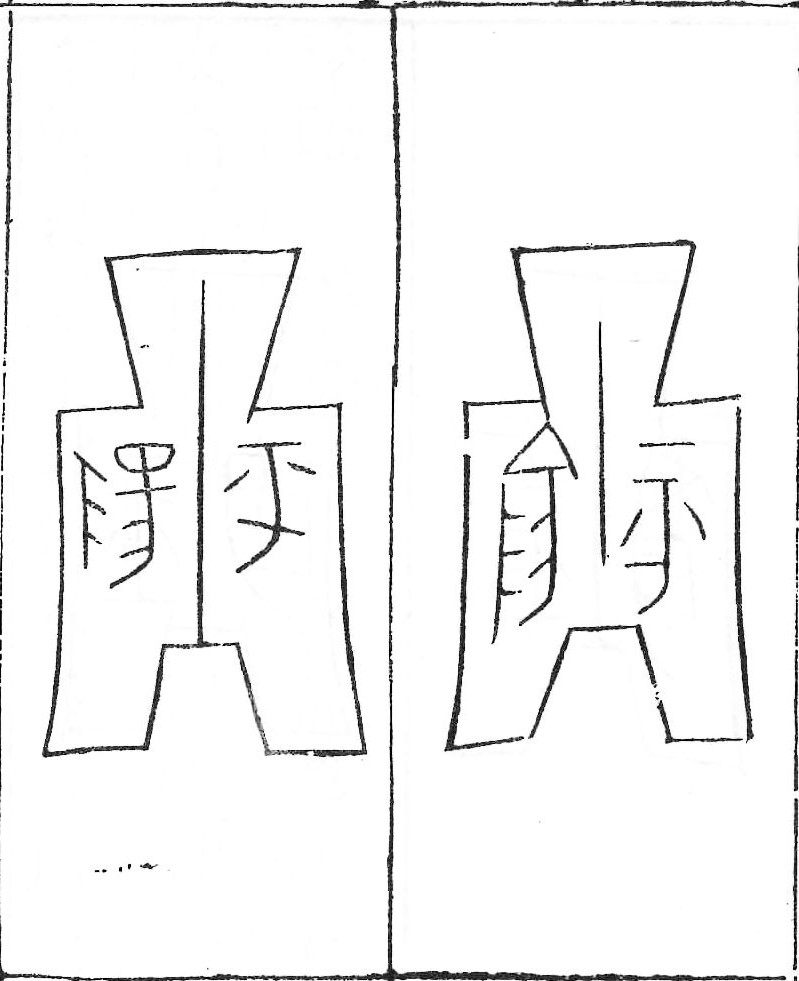 |
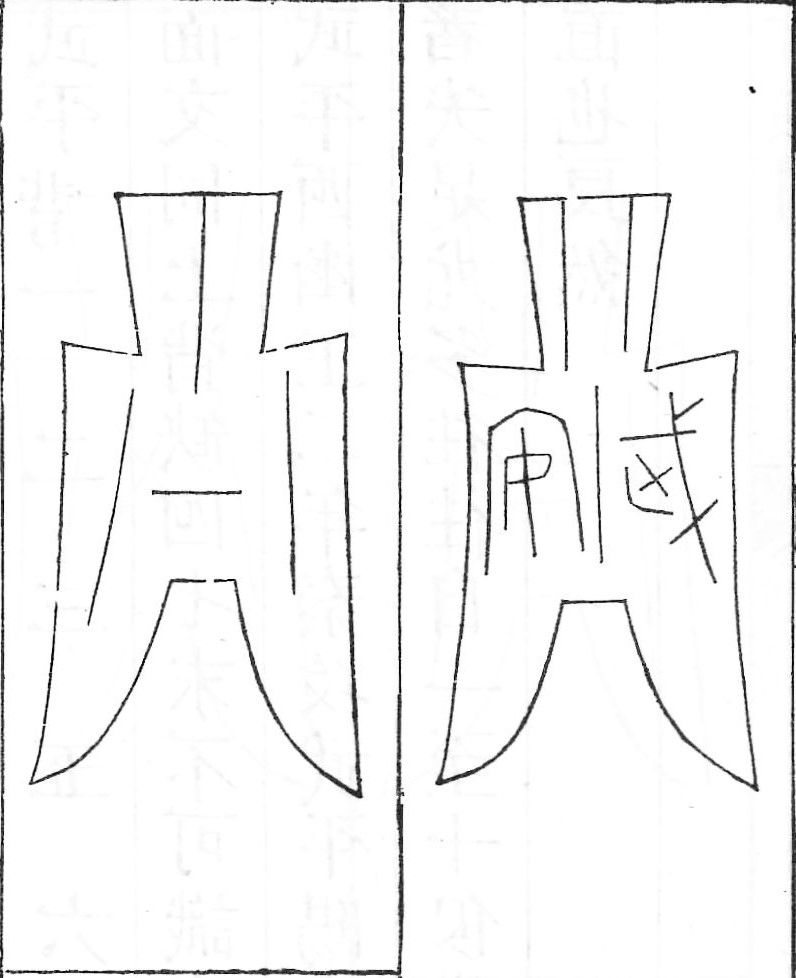 |
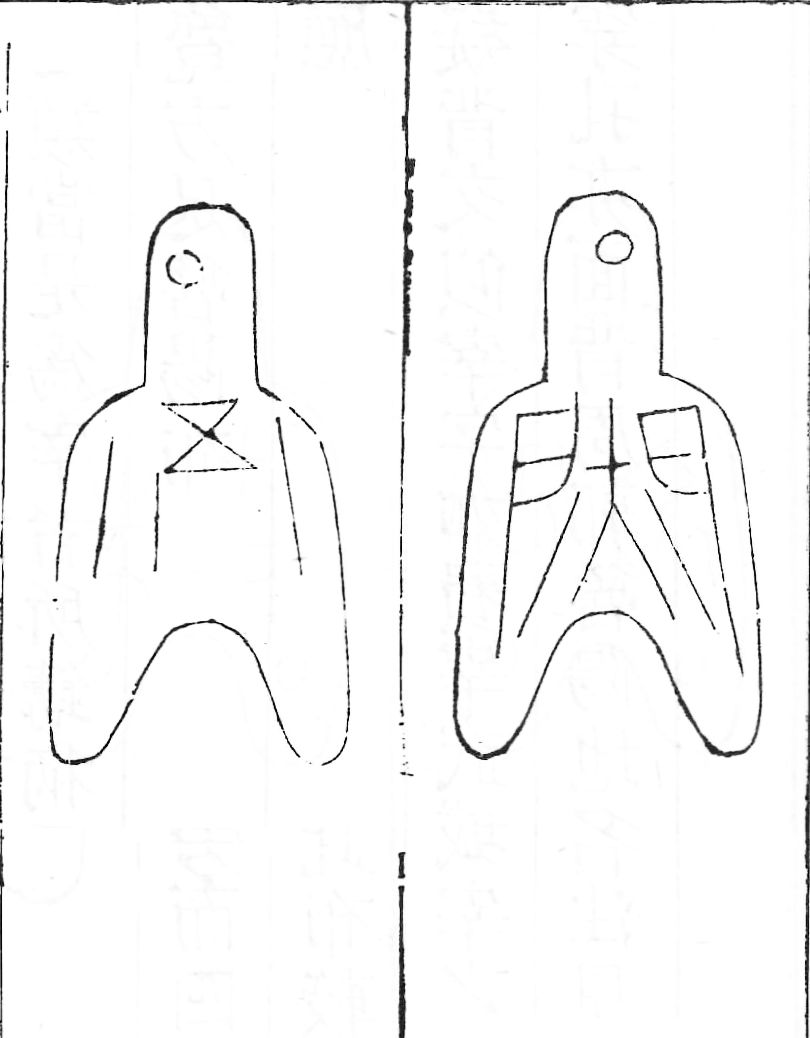 |
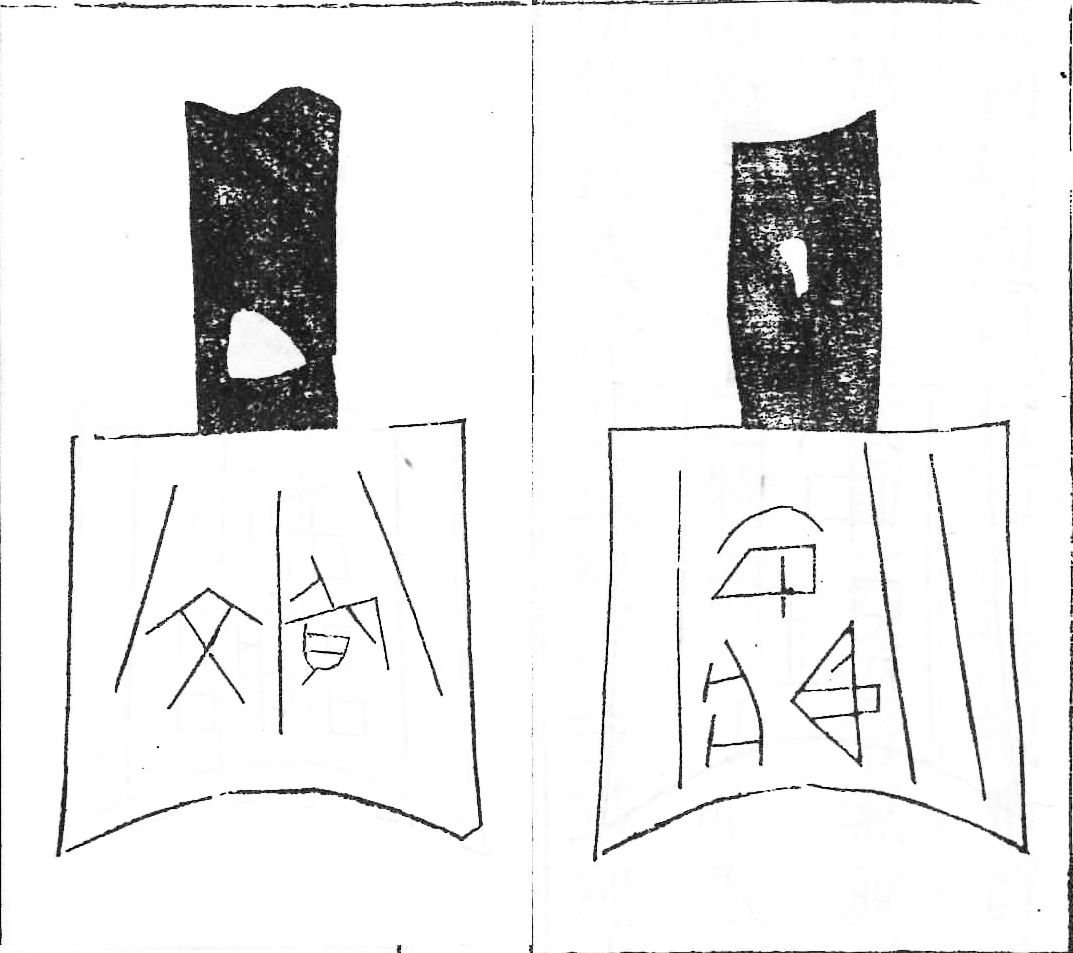 |
Spade coins with square feet (fangzu bu 方足布; inscription: Pingyang 平陽), pointed feet (jianzu bu 尖足布; inscription: Wu'an 武安, and "one" 一 on the back), round feet (yuanzu bu 圓足布; inscription: Guan 關, and "five" 五 on the back), and with a hole in the handle (kongshou bu 空首布; inscriptions: An cang 安藏, and Wen huo 文貨). |
|
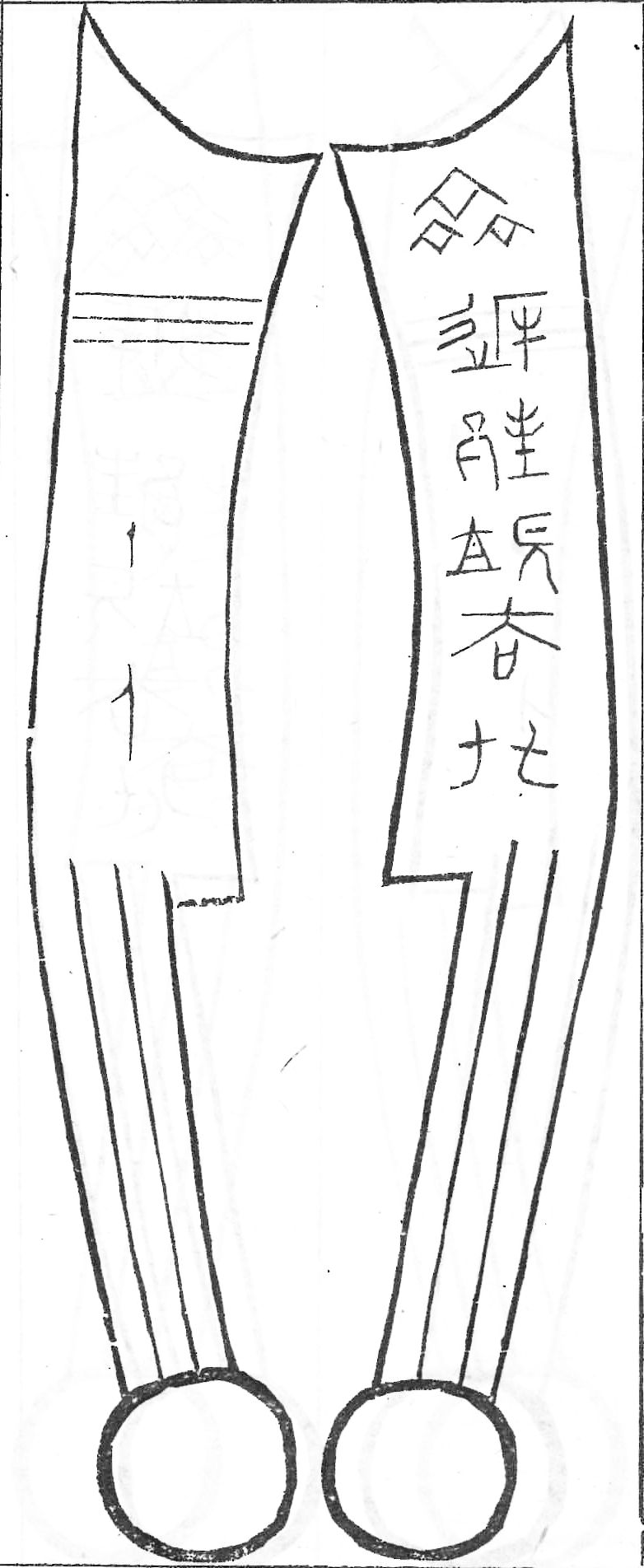 |
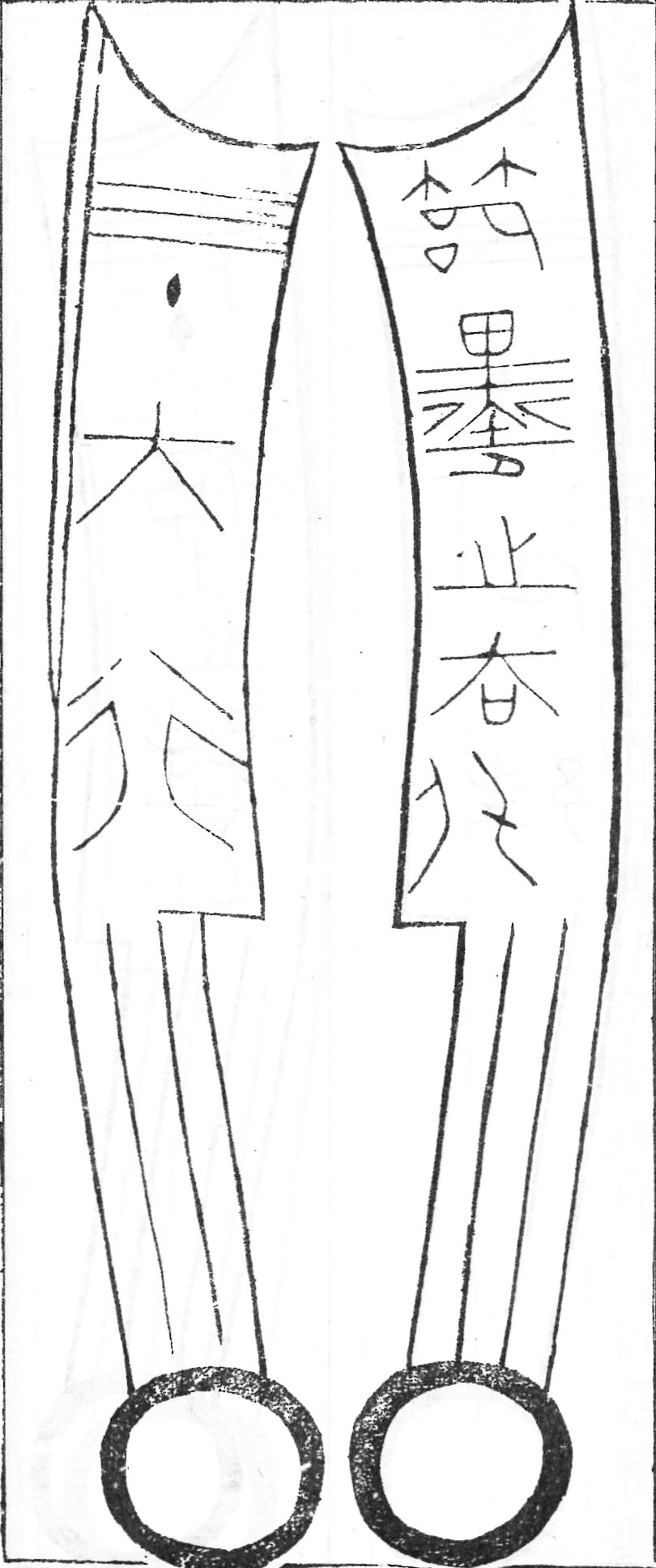 |
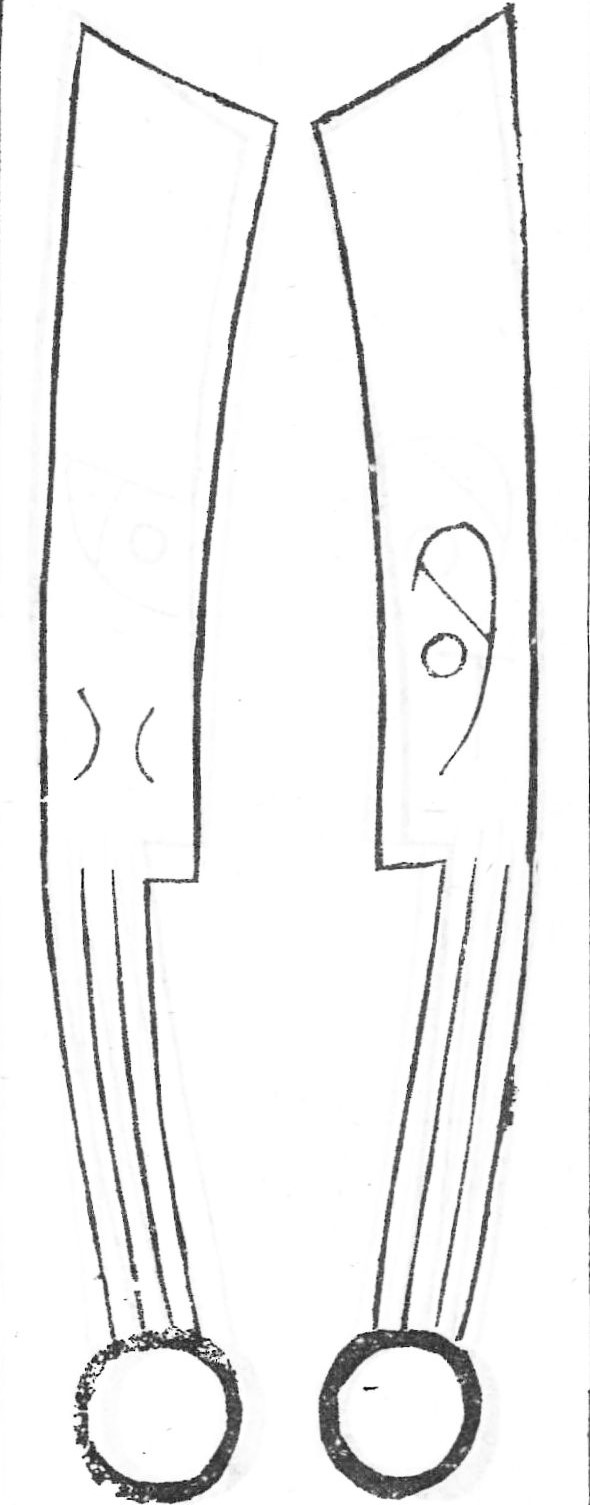 |
Knife coin from the capital of the regional state of Qi (Qi dao 齊刀; inscription: Qi jian bang jiu qu huo 齊建邦就去化[=貨], and huo 亻[=貨] on the back), from the city of Jimo (Jimo dao 即墨刀; inscription: Jiemo yi zhi qu huo 節墨邑之去化, and daxing 大行 on the reverse side), and a so-called Ming dao 明刀 coin (inscription ming 明, and "eight" 八). |
||
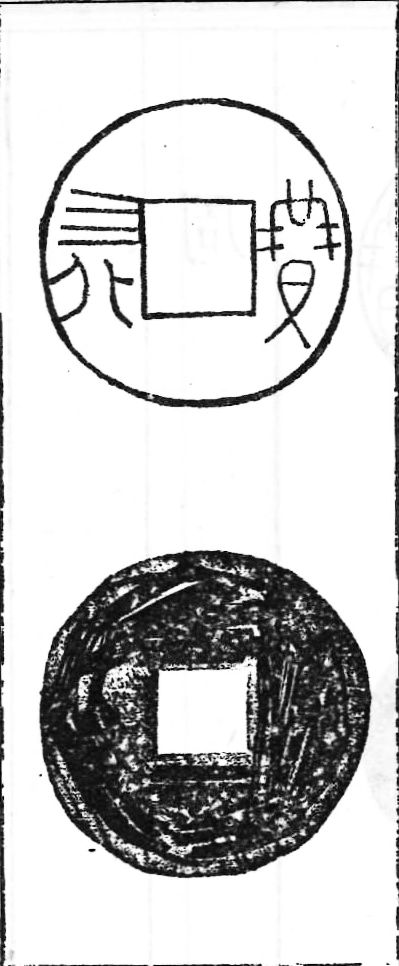 |
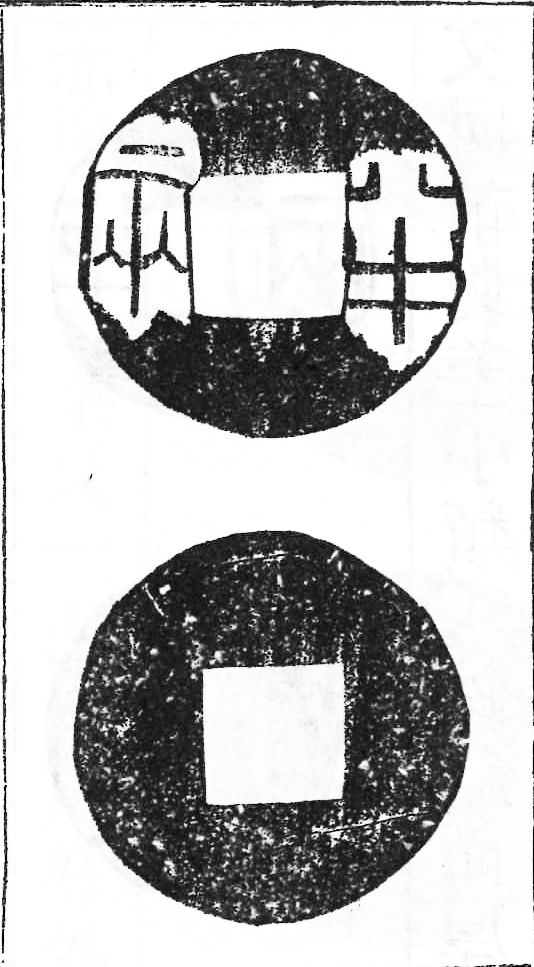 |
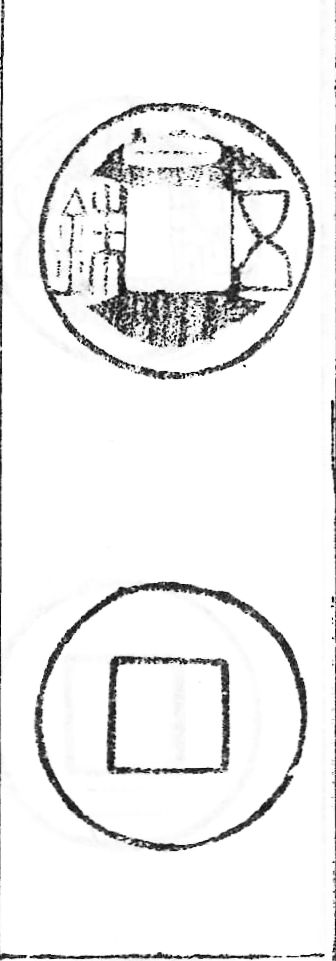 |
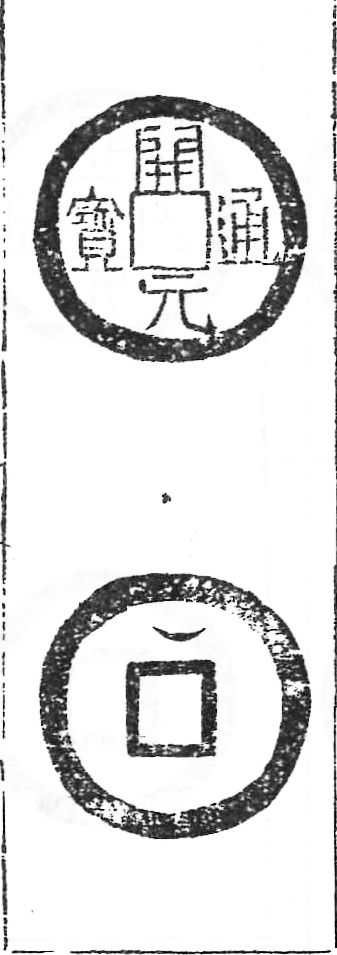 |
Round standard coin (yuanfa zhengpin 圓法正品) from the Zhou period (inscription bao si huo 寶亖[=四]化), half-ounce coin (ban liang 半兩) from the Qin period, a five-zhu 五銖 coin from the Han period, and a Kaiyuan tongbao 開元通寶 coin from the Tang period with indicator symbol of the mint on the reverse side. |
|
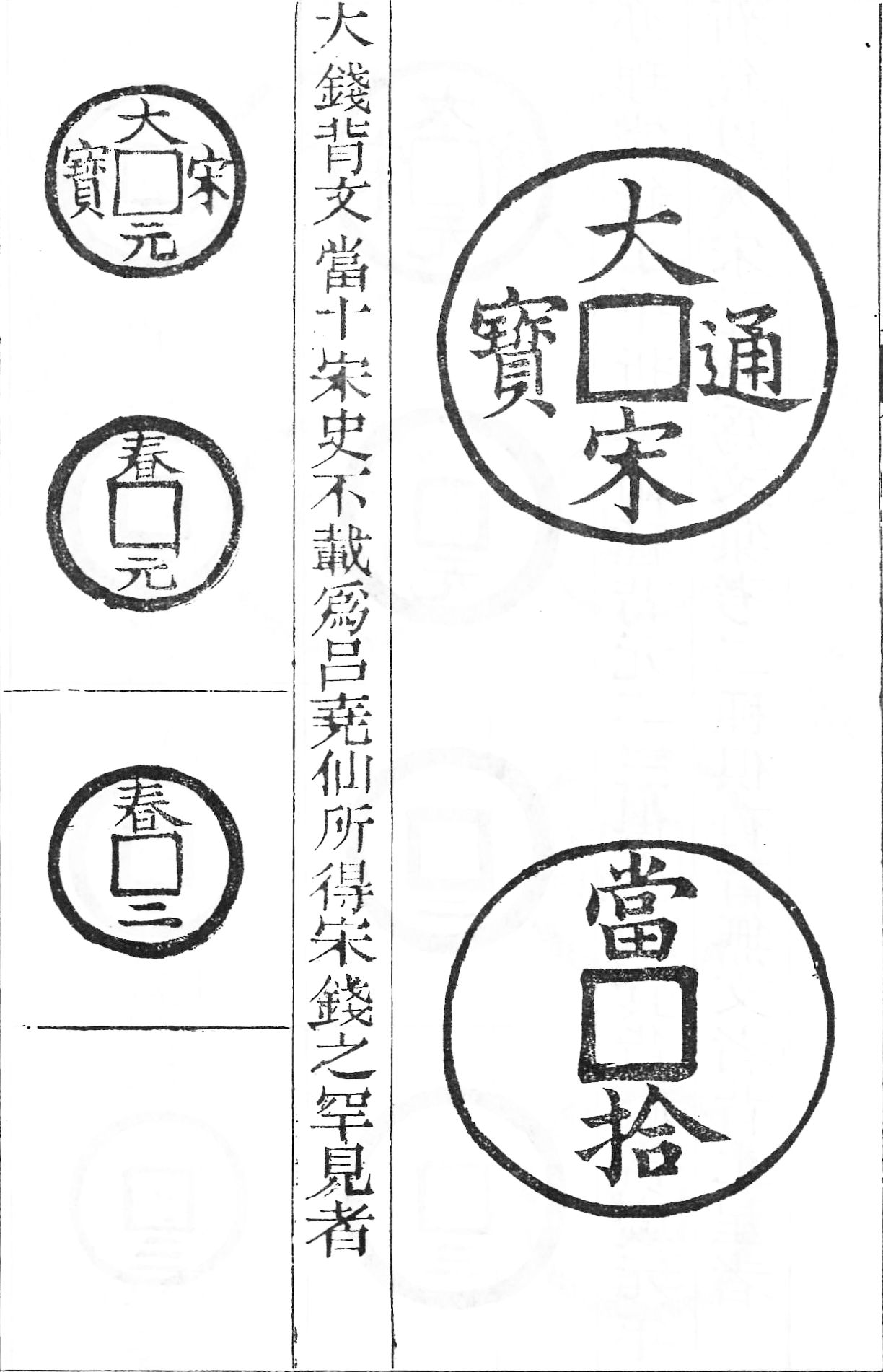 |
Very rare "large cash" (da qian 大錢) Da-Song tongbao 大宋通寶, valued ten cash (dang shi 當拾), and an iron cash coin (tieqian 鐵錢) inscribed Da-Song yuanbao 大宋元寶 on the obverse, and with the series of issue on the reverse side, both from the Southern Song period. |
 |
Mould (quanfan 泉笵[=範]) for a Warring-States-period coin with the inscription Da huang bu huo 大黃布化. |
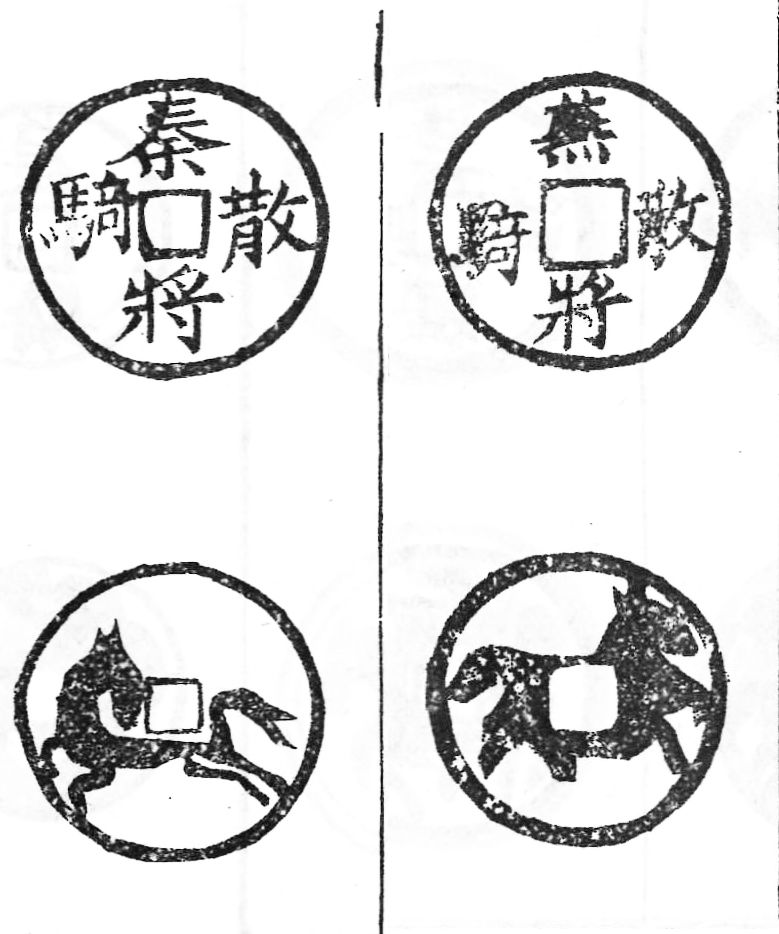 |
So-called "horse coins" (maqian 馬錢) inscribed Yan (Qin) jiang sanji 燕(秦)將散騎 "Cavalry general of the state of Yan (Qin, resp.)". |